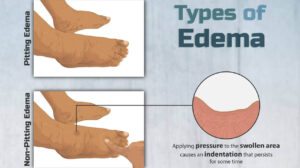
Undoubtedly, the discovery of penicillin is one of the biggest leaps in modern medicine. Penicillin has saved many people from a deadly bacterial infection. Know who discovered penicillin, as well as other details regarding this life-saving antibiotic.
What would a world without penicillin be like? The drug has saved millions of lives worldwide since it was discovered nearly a century ago.
Considered a miracle drug, penicillin is a drug that successfully conquers various infections due to bacteria. From syphilis to diphtheria. Let’s know who discovered penicillin, the history of the beginning of this drug.
Who Discovered Penicillin?
Alexander Fleming, a Scottish physician, was the inventor of penicillin. This led to Fleming being awarded the Nobel Prize in Physiology or Medicine in 1945, along with Howard Florey and Ernest Chain.
Penicillin was discovered by Fleming in 1928 by accident. At that time, Fleming, who had just returned from vacation saw his jelly cup had been contaminated by some kind of fungus. He also noticed that bacteria did not grow in this polluted area.
Out of curiosity, Fleming took samples of the fungus for research. He also discovered that the fungus comes from the genus Penicillium.
Fleming then concluded that penicillin is a substance that has an antibacterial effect on staphylococcus and other gram-positive pathogens.
A farm boy who studied medical school
Alexander Fleming was born in rural Lochfield, Scotland, on 6 August 1881, one of four children of Hugh and Grace who worked as farmers. Alexander also had four half-brothers from his father’s first marriage.
Alexander was very interested in the world of health from a young age, and was talented at school. When he was 14 in 1895 he moved to London and became a student at Regent Street Polytechnic.
His medical experience began in 1901 when he was accepted as a student at St. Mary’s Hospital Medical School, University of London. During college, he won a gold medal in 1908 as a top student.
Uninvited Fungus
At that time, Professor Fleming was busy investigating staphylococci, a harmful pus-causing bacteria that cause thousands of soldiers to die from sepsis caused by the bacteria.
For research purposes he bred the “starter” bacteria in petri dishes. On September 3, 1928, after spending the summer holidays during August, he discovered the petri dishes where the culture formed a type of fungus.
Every other research expert will usually throw the petri dish in the trash can. Because the fungus is a sign that the way it works is dirty, and is a reproach for a bacteriologist.
Alexander Fleming himself is famous for being a very clever research expert, but careless and his own laboratory often looks messy. Because his investigation was not subsidized from St. Mary’s hospital, he was forced to work in a small laboratory that was apparently more like a pharmacy warehouse and not clean at all. The equipment is what it is. Fleming is very used to such occurrences.
But that time, Alexander Fleming did not immediately discard the results of the fungus culture. He carefully observed the development of the fungus. All this time, it’s all been a coincidence, but now Fleming is moved to find out more. The circles around the fungus have wiped out the pus-causing bacteria. Apparently the fungus has produced an ingredient that could destroy staphylococci.
And that’s the kind of material that doctors around the world have been looking for for decades.
Fleming then took a petri dish with both hands and ran to the laboratory room of St. Mary’s hospital to tell his colleagues about it. Together with them during world war 1 from 1914 — 1918 worked 18 hours a day in a war laboratory in France in search of a cure against staphylococci.
Fleming proudly showed his petri dishes to colleagues. But they were apparently uninterested and only briefly noticed.
“Ah, fungus again,” they said and then they were indifferent to the discovery.
That’s all they’re commenting on. Fleming was stunned. But he remains convinced that it is the fungus that destroys the pus-causing bacteria.
28th September 1928: Antibiotic Penicillin Discovered
Fleming then took samples of the fungus and researched it. He found that the fungus is useful for treating diseases due to bacteria. He called the fungi, penicillin. Because the fungus comes from the genus Penicillium.
Fleming also found that bacteria themselves can develop resistance and resistance to penicillin if the antibiotic is used as an antibiotic too little and is used for a short period of time.
Fleming’s discovery in September 1928 marked a new century in the world of modern antibiotics. In 1939, Howard Florey and Ernst Chain developed penicillin and made a major production with the help of funds from the United States and British governments.
Source:
- Image: Unknown author, CC BY-SA 3.0 NL https://creativecommons.org/licenses/by-sa/3.0/nl/deed.en, via Wikimedia Commons.
- Video: NowYouKnowAbout
![Glycoproteins: Unraveling the Complex World of Cellular Signaling [Definition, 12 Functions & Example] 1 Glycoproteins: Unraveling the Complex World of Cellular Signaling [Definition, 12 Functions & Example]](https://markethealthbeauty.com/wp-content/uploads/2020/10/What-Is-A-Glycoprotein-300x168.jpg)



